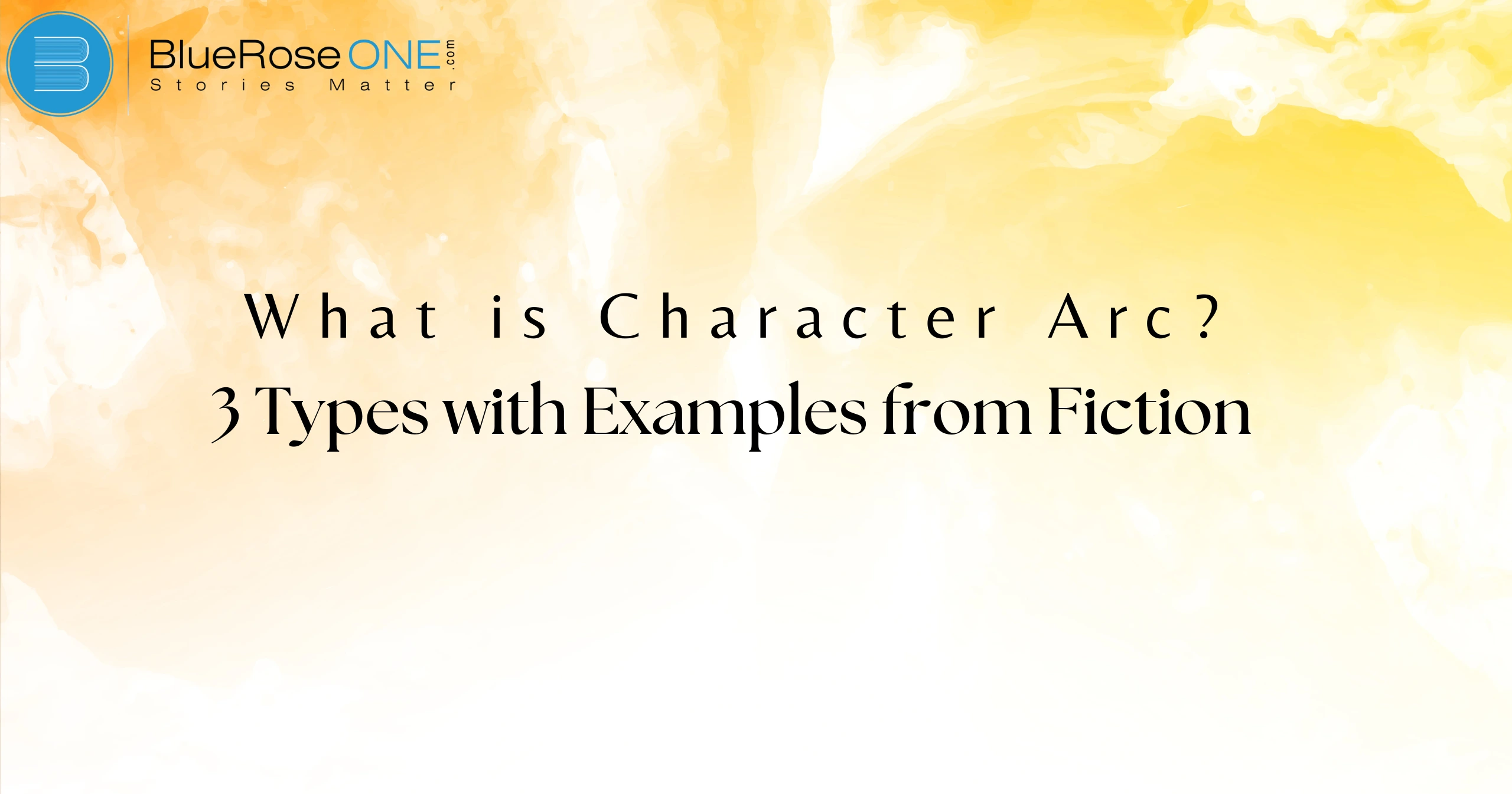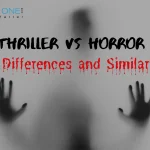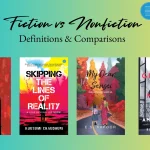A character arc is one of the key factors that contribute to a fascinating story. It refers to a character’s change or inner journey as they progress through the story. Whether a character is a protagonist, antagonist, or supporting character, how they evolve (or do not change) throughout a story is critical to keeping the audience engaged. In this post, we will go deeply into the concept of a character arc, investigate the three primary types of character arcs, and examine examples from popular fiction to better understand how they operate.
You may also like: Top 10 Tony Ribbons Books That Inspire Success and Change
What is a Character Arc?
A character arc is a journey of transformation that a character goes on as they progress through the events of the novel. This transformation can be emotional, moral, psychological, or social, but it always involves a transition from one condition to another. A character arc is important in most stories since it serves to develop the characters and makes the story more accessible and compelling.
Imagine a character arc as a road trip. The character begins at one spot, experiences problems along the road, learns lessons, and, by the end of the story, has arrived at a new emotional or mental state. Sometimes the change is drastic, and other times it is subtle. Regardless, the character arc is crucial to the character’s growth and frequently reflects the story’s theme.
You may also like: 12 Charater Archetypes Every Author Should Learn About
Why is a Character Arc Important in Storytelling?
A great character arc provides dimension to a story. It guarantees that characters are dynamic rather than static, making them more engaging and relatable to viewers. Without an arc, characters may appear flat and uninteresting, resulting in a story with little emotional resonance.
Emotional Investment
Emotional investment is important in character arcs because it ties the audience with the character’s path. When readers or viewers care about the character’s development or challenges, they become more invested in the story. As the character overcomes problems and evolves, the viewer experiences their highs and lows, making the shift more powerful. This emotional connection propels the narrative along, making the character’s arc memorable and the overall plot more captivating. Without emotional investment, a character’s development may feel hollow.
Conflict and Resolution
In storytelling, conflict and resolution are essential to a character’s arc. Conflict is the difficulty or problem that the character experiences, and resolution is how they overcome it. This struggle helps to shape the character, making their progress more significant. A well-crafted character arc demonstrates how the struggle affects the character, resulting in personal growth or transformation. The resolution not only concludes the story, but also emphasises the characters’ journey and progress during the battle.
Theme Representation
A character arc is essential for conveying a story’s themes. As the character develops or changes, their journey frequently reflects the key concepts or messages that the writer want to communicate. For example, a character who learns the value of love or sacrifice can bring up themes of selflessness or redemption. The relationship between character development and themes allows readers to engage with the story on a deeper level, making the message more compelling.
You may also read: What is Foil Character? Definition and Examples in Literature
The 3 Types of Character Arcs
Now that we understand what a character arc is and why it’s essential, let’s explore the three primary types of character arcs. These types refer to how a character’s journey develops and the nature of their transformation.
1. Positive Character Arc (Growth Arc)
A good character arc involves a character’s development throughout the story. They begin in a state of weakness, uncertainty, or ignorance and gradually evolve into a more confident, enlightened version of themselves. Growth is typically the consequence of learning from mistakes, overcoming personal struggles, or accepting challenges that compel them to change for the better.
Example: Harry Potter in Harry Potter and the Sorcerer’s Stone.
At the start of the book, Harry is a typical, rather lonely youngster who is unaware of his magical background. Throughout the series, notably in the first novel, Harry discovers his skills, confronts external threats, and grows into a courageous, smart young man. His journey represents the typical “hero’s journey” in which the character transforms from an ordinary person to a hero capable of great things.
You may also like: Book Review: Lord of the Flies by William Golding
2. Negative Character Arc (Fall Arc)
A negative character arc depicts a figure that begins strong or virtuous but ultimately descends into darkness, corruption, or failure. This type of arc is frequently seen in tragic heroes, antiheroes, and villains. The character’s weaknesses or external circumstances usually drive the transition, which leads to their moral collapse or final loss.
Example: Anakin Skywalker in Star Wars
Anakin Skywalker’s arc in Star Wars is one of the most well-known examples of a negative character arc. He begins out as a talented Jedi with a promising future, but his fear, wrath, and thirst for power drive him to become Darth Vader. His fall from grace exemplifies the devastating implications of his inner conflict, and he is eventually destroyed by the darkness he attempted to contain.
3. Flat Character Arc (Steady Arc)
In a flat character arc, the story’s events have little impact on the character. They may not experience any significant personal development or transformation. Instead, their job in the plot is to act as a catalyst for transformation in other characters, or to serve as a moral compass or source of wisdom.
Example: Sherlock Holmes in Sherlock Holmes
Sherlock Holmes is an excellent example of a flat character arc. Throughout his various experiences, he does not change significantly; instead, he remains the extremely brilliant and analytical detective. What makes his character intriguing is not his personal development, but his capacity to solve puzzles and inspire other characters to evolve around him.
You may also like: What is round character? Definition and Key Traits
Character Arc vs. Character Development: What's the Difference?
These phrases are sometimes used interchangeably, although they are not synonymous. A character arc is the overall shift that a character takes from the beginning to the finish of the story. Character development, on the other hand, is the process of creating a character’s personality, motives, and backstory. While the character arc represents the trip, character development is the more in-depth work that goes into it.
Creating a compelling character arc requires careful planning and an understanding of the character’s journey. Here are a few tips to craft a strong character arc:
Start with a Flaw or Desire: To develop a fascinating character arc, start with a defect or desire that motivates the character’s actions. This defect could be insecurity, arrogance, or fear, while the desire could be power, love, or vengeance. This starting point reflects the character’s emotional or mental state, laying the groundwork for future development. As the story progresses, the character strives to overcome their shortcomings or fulfil their desire, making their journey realistic and fascinating to the audience.
Introduce a Catalyst:To establish a captivating character arc, provide a catalyst early in the novel. A catalyst is an incident or condition that forces the character to step outside of their comfort zone and causes transformation. A challenge, loss, or new chance may drive the character to address their flaws or anxieties. This turning point is critical to the character’s development since it initiates the journey and sets the stage for transformation.
Challenge the Character: To build a fascinating character arc, you must challenge your character. This entails placing them in situations that require growth or transformation. Whether it’s a personal struggle, a moral quandary, or an external conflict, these challenges should push the character beyond their comfort zone. The character’s reactions to these challenges show their genuine personality and propel the necessary transformation for a meaningful arc. Without difficulties, characters become stagnant, making the story less interesting to readers.
Show the Change: To develop a captivating character arc, it is critical to “show the change” rather than simply telling the audience about it. This involves portraying how the character’s beliefs, behaviours, or feelings change throughout the novel. In The Lion King, for example, Simba matures from an inexperienced cub to a confident leader. Instead than simply explaining his development, he demonstrates it via his actions, such as recovering his realm. This makes the character’s transition feel more authentic and compelling to the audience.
End with Resolution: The resolution is an important aspect of any interesting character journey. This is the point at which the character has resolved their internal conflict or made significant personal growth. After encountering trials, the resolution demonstrates how the character has evolved, bringing their journey to a close. It is critical for pleasing the viewer since it illustrates how the character has matured and how their problems are addressed, whether via success or failure, depending on the arc type.
Character Arc Examples in Popular Fiction
Luke Skywalker’s storyline is an excellent example of a positive character arc. He transforms from a farm child on Tatooine into a powerful Jedi Knight, learning about responsibility, courage, and sacrifice along the way. His change exemplifies the hero’s journey motif.

Luke Skywalke
Walter White’s character arc represents a sad example of a negative arc. He begins as a mild-mannered chemistry instructor who, after being diagnosed with cancer, turns to cooking methamphetamine in order to insure his family’s future. Over time, his moral compass deteriorates, and he becomes the antagonist in his own story.

Walter White
Katniss begins the story as a survivalist determined to protect her sister. However, as the novel progresses, she transforms into a revolutionary icon, battling the dystopian regime while discovering her own voice.

Katniss Everdeen
Conclusion
A character arc is a critical component of storytelling that ensures characters mature in a way that supports the tale. Whether it’s a positive, negative, or flat arc, a character’s metamorphosis engages the audience and creates a stronger emotional connection to the plot. By comprehending and writing interesting character arcs, writers can build distinctive, dynamic characters who connect with readers.
















